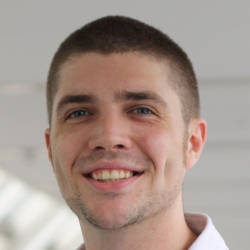
Here in Japan, the beer comes out early and it comes on strong. At the National Science Foundation’s (NSF’s) East Asia and Pacific Summer Institute orientation in the beautiful hills of the Kanagawa prefecture, our Japanese hosts welcomed all manner of international scientists with gourmet delicacies ranging from lobster to dumplings, tempura to lychee, sashimi to mochi, and two gigantic tuna heads, freshly cleaved from 600-pound sea beasts. Most of all, in a gracious gesture that speaks to the deep and pleasurable relationship between alcohol and Japanese professional life, they welcomed us with gallons and gallons of alcoholic refreshments.
After a long day of lectures, handshakes, insurance forms, name tags, and fluorescent lights, us 80-plus NSF scholars, 40 international students, and our wonderful Japanese hosts descended upon row after row of Kirin Ichiban beer, red wine and white wine, and most insidious of all, the local distilled spirit, shochu, served in much-too-tall iced mugs. The refreshments served to nicely bridge the inevitable cultural divide that results from the inscrutability of foreign mannerisms. We speak different languages, have widely different cultural expectations, and diverge in even the most basic social cues, but chemical wonder that is alcohol, we all get tipsy in more or less the same fashion, and this provides a welcome rallying point for Japanese career men and conference-weary students alike.
Most remarkable of all is that this is precisely the kind of interaction the NSF intends to foster with the one-of-a-kind East Asia and Pacific Summer Institute. Every year the NSF sends more than 200 promising young students abroad to engage with foreign scientists, bureaucrats, traffic patterns, lab mates, shop keeps, diplomats, delicacies, graduate students, and everything else that makes up the dizzying moments of an enlightening, unforgettable 10 weeks of research in a strange and beautiful foreign culture.
I am blessed to be embarking on this NSF journey for a second time, and in the year since I first set foot in the thriving megalopolis of Beijing I have undergone a fundamental change in how I understand the world and the role of the U.S. in the international scientific community. Long after I said goodbye to those sweaty, smog-filled streets, my perspective continued to mature. In the global scientific theater the U.S. is at once a leader and a peer, a collaborator and competitor, and we are most certainly not the only game in town. The NSF understands that we must reach out to the international community and build interdisciplinary, cross-cultural bridges in order to remain innovative and competitive in the twenty-first century, and this program is an essential part of that agenda.
Over the coming weeks I look forward to sharing a slice of this experience with you—it’s disorienting and transformative, at once exciting and unnerving, and I hope some of this dynamism comes across in the pictures, videos, and writings that will fill this space. Japan is a crowded, resourceful, and above all else creative society, and the IBM Tokyo Research Lab, where I will be working for the next 10 weeks, is home to some of the brightest thinkers on the planet. Already we are awash in the omnipresent innovative spirit of this country (underground elevator car parks? chopsticks with training wheels? intelligent toilets?) and the science on tap for the summer is absolutely cutting edge (robotic prosthetics! remote-controlled dragonflies! targeted medicine delivery! self-replicating automatons!)
It’s going to be a crazy summer, and I can’t wait to see what’s next.



Join the Discussion (0)
Become a Member or Sign In to Post a Comment